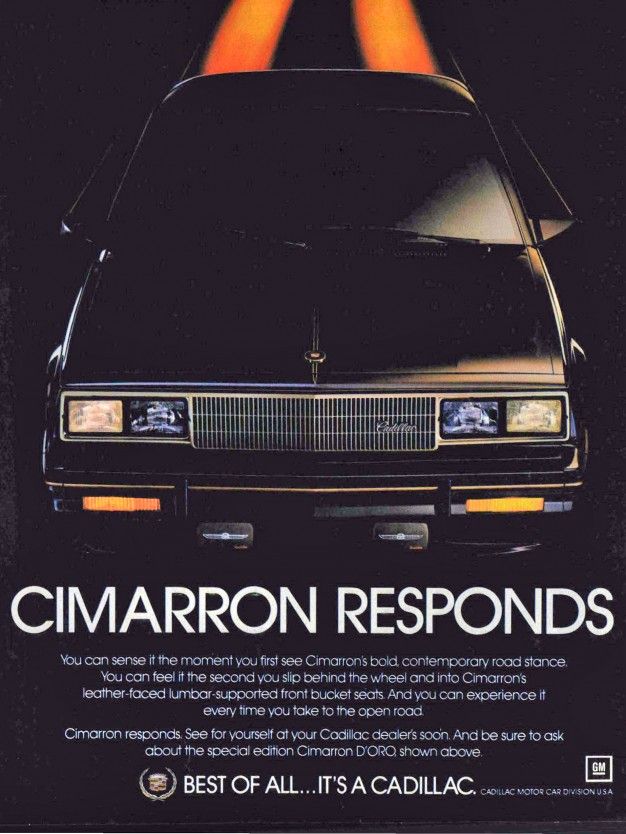Young Rich, I just read the road test of the 1982 Cadillac Cimarron that you wrote for the August 1981 issue of Car and Driver. I know you’ve felt embarrassed about it for years—since I’m you, after all—given that you effused over the small Caddy. Too bad that car went on to become a punchline and what could be a great Jeopardy question under the category heading “Cars that tried to fool us.” Clue: Cadillac Cimarron. Answer: What is actually a Chevy Cavalier?
Hey, everyone blows it once in a while in this business, buddy. I’m here to help you admit it. Sorry it was your turn this time, but it’s good for a laugh all these years later. Okay, you were a freshly minted Car and Driver editor—very young, very keen to do the right thing—when Cadillac shocked the industry with the Cimarron. As your older and wiser self, I’m here to tell you that you shouldn’t feel so bad about not panning it. Chagrined? For sure, but not mortally embarrassed at the mere mention of “that Cimarron road test.”
It’s not your fault that Cadillac tried to pass the car off as a genuine competitor to the small BMWs and Audis of the time. It seems silly now, but remember what a big change it was from anything wearing the wreath-and-crest badge? You said as much in the piece. Cadillacs from back then were about as different from autobahn-bred BMWs and Mercedes-Benzes as lions are from cows. Yes, they both have four legs, but they run very differently.
European luxury sedans were beautifully crafted, tautly suspended, highly tactile passenger modules capable of sustained high speeds—and nimble on back roads too. Cadillacs, on the other hand, were cush-mobiles that bobbed like they were adrift on the high seas, steered with all the responsiveness of a tractor-trailer, and had rococo interiors upholstered in velour track-suit material. They seemed like cars grasping to yesteryear; the foreigners were aimed at tomorrow.
Young Rich, I know you and your C/D colleagues (Hey, Ceppos, no shifting blame to co-workers—Ed.) were also equally
shocked and amazed that Cadillac would attempt to sell a car like this, despite how close it was to a Chevy Cavalier. Hell, it had blackwall tires and a manual transmission! You guys thought that was enough because back then, it seemed that American brands like Cadillac, Lincoln, and Chrysler would never get hip to the idea of luxury cars being light and nimble and dressed in restrained sheetmetal and business-suit interiors. But here was this . . . thing that was as unexpected as seeing an alien spaceship landing in the C/D parking lot. Hope! There was hope for America’s luxury-car makers after all!
What was even more surprising is that you double-checked your enthusiasm for the Cimarron by pitting it against four import competitors—the Audi 4000, BMW 320i, Volvo GL, and Honda Accord—and found that, while the Caddy had some flaws, it could pretty much run with the competition and felt surprisingly good doing it.
Too bad about reality, huh, my young friend? The world looked at the Cimarron and saw an overpriced Cavalier, more so as the years wore on, and GM was later pilloried for making cookie-cutter cars with barely discernible brand-to-brand differences. Unlike you, other less enlightened souls couldn’t appreciate the nuanced differences between the small Caddy and its Chevy doppelgänger. Oh, well. You were young and callow and caught up in, well, I guess the heady idea that Cadillac might save itself from sure disaster. Your colleagues agreed (Hey, Ceppos! Didn’t we say no blame-sharing?—Ed.), but then you all finally came to see the Cimarron for the big marketing blunder it had been.
I’m a more compassionate guy in my old age, so I’ll say this for you, buddy, so you don’t have to: “Mea culpa!”

